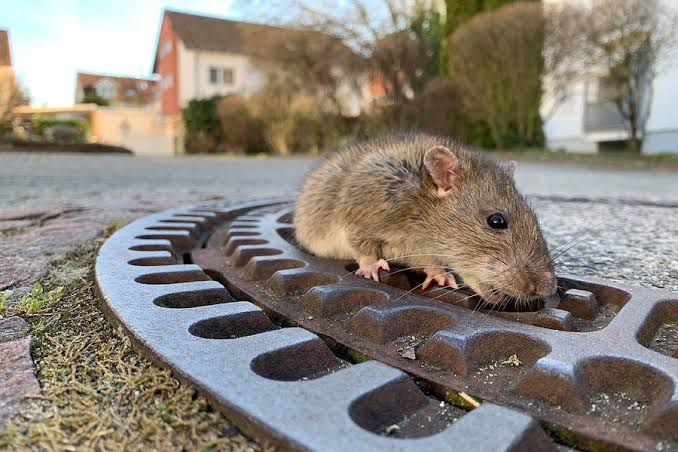Rat-bite fever is a bacterial infection that is spread through contact with rats, other rodents, and food and beverages that are infected.
The Centers for Disease Control and Prevention (CDC) announced in May 2020 that several communities had reported increased activity of rodents.
The risk of infection due to a rat bite is approximately 10%, and as a result, children living in poverty have the highest risk of developing rat bite fever (RBF).
RBF may cause serious complications, including damage to bones and inflammation of the heart, brain and spinal cord, without antibiotic treatment. It can be fatal.
We define RBF and address its causes and treatments in this article.
What is RBF?

RBF is a serious infection caused by the bacteria Streptobacillus moniliformis or Spirillum minus. They spread to humans by bites of rats, contact with urine and feces of rats, and infected food and beverages.
As researchers note in a 2020 study In the United States, more than 2 million animal bites occur annually, and rats are responsible for about 1 percent.”
They continue to report that RBF continues to grow in children under 5 years of age who are living in poor conditions.
The researchers also note that in pet stores and laboratories, people working with rats are at risk, and that the risk of an infection arising from a bite is around 10 percent.
In a 2018 analysis, between 2010 and 2016, researchers found 11 RBF reports on Vancouver Island, Canada. RBF occurred in individuals aged 5-57 years, nine of whom had pet rat bites.
RBF can cause serious complications, and as a result, an estimated 7–13% of individuals who do not receive RBF treatment die, although the incidence is higher in individuals with serious complications.
Causes
Two forms of RBF exist. The most prevalent forms in North America is called streptobacillary RBF, as it leads from infection with S. moniliformis.
Spirillary RBF, or sodoku, is the other kind. It is triggered by S. Minus bacteria, and in Asia, this is the primary form.
After one of those types of bacteria enters the body, through an open wound or the mucous membranes of the eyes, nose or mouth, a person develops RBF.
Bacteria that cause RBF are transmitted to individuals by:
- bites or scratches from infected rodents
- the saliva, urine, or feces of infected rodents
- contact with contaminated surfaces
- contaminated foods or drinks
This disease is relatively uncommon, although reports of RBF occur globally. An individual can, however have a higher risk of RBF if they:
- handle rats as part of their work
- live in an infested building or area
- keep rats or other rodents as pets
RBF does not pass from person to person.
Symptoms
Based on the underlying bacterial infection, the symptoms of RBF differ.
S. Moniliformis has a period of incubation of 3-20 days. The interval between exposure to the bacteria and the appearance of symptoms is the incubation period.
Symptoms of streptobacillary RBF include:
- a fever that comes and goes for several weeks
- a rash near a rat bite
- joint and muscle pain, especially in the lower back
- chills
- nausea
- vomiting
- a sore throat
Before the symptoms appear, a bite that causes spirillary RBF may start healing. The symptoms can take 1-3 weeks to appear and include the following:
- a fever and chills
- muscle and joint pain
- a headache
- a sore throat
- vomiting
- inflammation and ulceration near the site of the bite
- a brown or purple rash
- hard or tender lymph nodes
Treatment
RBF is treated by doctors with antibiotics. If there are complications, a person takes them for 7–14 days or up to 4 weeks.
RBF can lead to serious complications if a person does not receive treatment, such as:
- abscesses, or pockets of fluid inside the body
- inflammation of the liver or kidneys
- interstitial pneumonia, which causes lung scarring
- infections of the membranes covering the brain and spinal cord
- endocarditis, or inflammation of the membrane surrounding the heart
- bone damage
The mortality rate is 53 percent if RBF causes endocarditis .
The current antibiotic of choice for both forms of RBF is penicillin.
However, in certain individuals, penicillin can cause allergic responses. Around 10 percent of all individuals have penicillin allergies, according to the CDC.
Signs of a penicillin allergy include:
- hives, which are itchy, raised bumps on the skin
- swelling of the face, hands, and feet
- difficulty breathing
- coughing
- chest tightness
- dizziness
People with allergies to penicillin can instead receive either streptomycin or doxycycline.
When to contact a doctor
RBF can cause serious, even life-threatening complications without treatment. If any alarming signs arise after a rat bite, seek urgent medical attention.
A doctor can diagnose S. Moniliformis by the use of a blood or tissue sample for examination. Usually, within 3 days, a person receives the results, although the timing can vary.
To diagnose S. minus, a doctor takes a tissue sample for testing. On a glass slide, the tissue is positioned and treated with a stain. This slide is examined by a laboratory technician and the bacteria can be identified by their scale, shape and color.
Summary
RBF is a serious infection caused by the S. moniliformis and S. minus bacteria. Through rat bites and infected food or water, these bacteria move into humans.
Usually, RBF results in nonspecific symptoms such as fever, pain in the joints, and nausea. RBF can lead to serious complications, such as endocarditis or inflammation of the membrane surrounding the heart if left untreated.
RBF is treated by doctors with antibiotics. It is critical that individuals, even if they no longer feel sick, complete the full course of antibiotics. Doing so can help to reduce recurrent infections and resistance to antibiotics.






